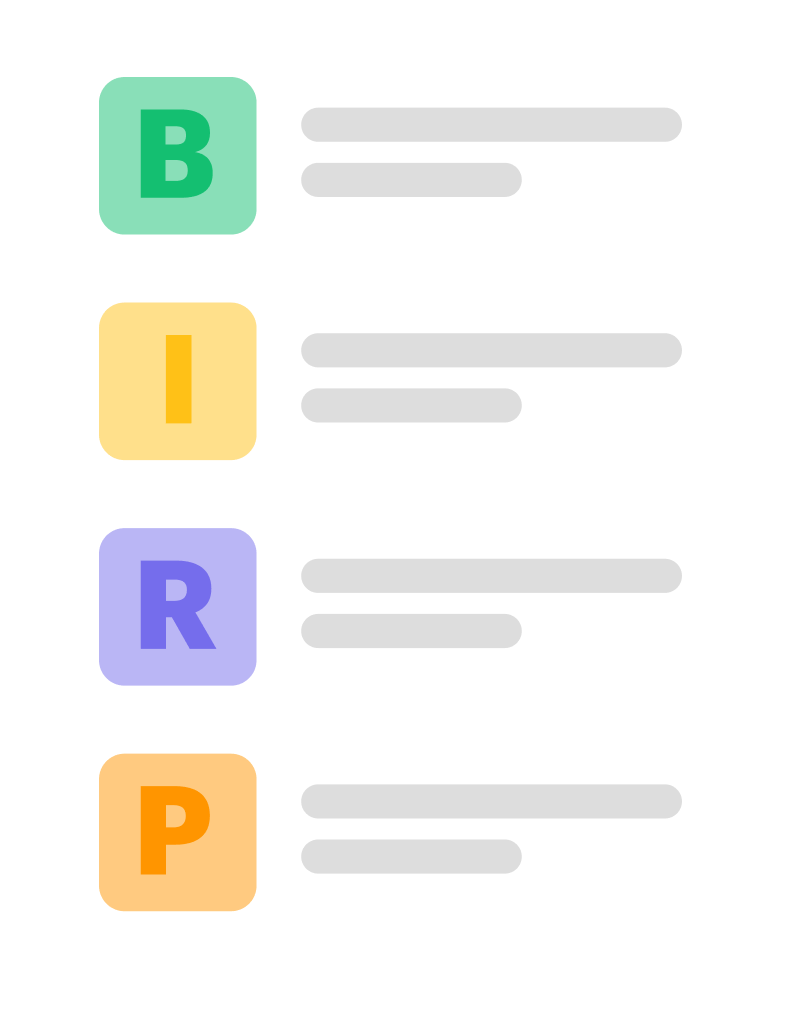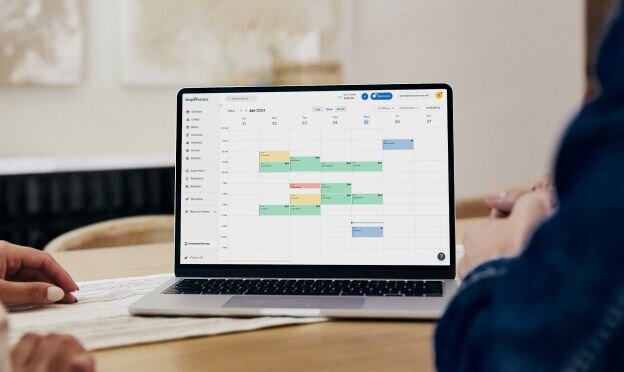How to Write BIRP Notes (With Examples)
Download our free BIRP note template
Download free resource
Enter your email below to access this resource.
By entering your email address, you are opting-in to receive emails from SimplePractice on its various products, solutions, and/or offerings. Unsubscribe anytime.

What is a BIRP note?
While there are a lot of different ways to write therapy notes, one popular structure is the BIRP note format. There are four sections that make up a BIRP note: behavior, intervention, response, and plan. BIRP notes can make your documentation more efficient by boiling down each session to four key questions:
- What’s the specific problem to be addressed in this session?
- What did the therapist do about it?
- How well did that work?
- What comes next?
These questions are addressed in the four sections of BIRP notes, which will be addressed below. The format of these notes make it easy for clinicians to track client progress and formulate treatment plans—without missing any critical details.
What's the difference between BIRP notes and SOAP notes?
BIRP notes and SOAP notes are both meant to streamline the note-taking process. BIRP notes focus on describing a session’s theme and overall tone, as well as the behavior of your client, while SOAP notes aim to be more objective and document treatment outcomes and next steps.
How long should a BIRP note be?
The BIRP format is designed to be efficient. Many providers who use BIRP notes build in checklists, pull-down menus, and other elements to make their documentation process even faster. Even when written out, each section is typically not more than a few sentences in length.
However, there are times when longer notes are appropriate. These might include sessions where risk factors are addressed, crisis issues are identified, treatment plans are changed, or other significant changes to the diagnosis or treatment process take place.
How to write a BIRP note
As mentioned above, the BIRP note format is designed to be efficient. Each of the four sections is intended for specific information about your session, which we’ll break down here.
B – Behavior
This section includes both your observations of your client’s appearance and the client’s own report of how they have been doing outside of sessions. A couple questions you can use to guide through this section are:
- Have their symptoms been worsening, improving, or staying about the same?
- Do they appear fully oriented and well-motivated for treatment?
Some clinicians will use a checklist or a set of pull-down menus to make the documentation of client behavior even more efficient. If appropriate, you can include direct quotes from the client in this section. Put simply, this section establishes what specific problem each session was trying to address.
I – Intervention
Here is where you describe the specific therapist actions taken to address the problem. Interventions should clearly link to both the problem at hand and the overall treatment plan, unless there’s an urgent issue (such as the emergence of risk for suicide or other violence) that requires deviating from the treatment plan.
Generally speaking, the intervention section is short. Most clinicians focus on a limited number of interventions in each session, and as long as their connections to the treatment plan and the client’s behavior are self-evident, no additional explanation is needed.
R – Response
This section of your BIRP note is for how your client responded to your session and the interventions you used. Did they seem to work, either in creating insight or in producing changes in behavior in session? Direct quotes can also be useful here to provide evidence in support of your conclusions about the effectiveness of interventions.
If an intervention produced a negative result, this section would also be where you would discuss your efforts to repair any rupture in the therapeutic relationship. Even where interventions worked as intended, here you can indicate any actions taken to reinforce those benefits and strengthen the therapeutic relationship.
P – Plan
Similar to the Plan section in other forms of progress notes, the Plan section of a BIRP note provides details on what happens from here. The Plan section would typically include information like:
- Date, time, and location of next scheduled session
- Referrals given to the client, if any
- Homework assigned to the client, if any
- Planned therapist consultation with client’s physician or other third parties
- Any other actions assigned to the client or therapist related to the client’s treatment
BIRP note example
Below is a BIRP note example to give more context to each section that you can use as a cheat sheet.
B – Behavior
Client presented for the fifth session of psychotherapy to address symptoms of anxiety. Client was neatly dressed and fully oriented. Client displayed rapid speech and behavioral symptoms of anxiety, including fidgeting. Client did not display or report any current risk factors for suicide or other forms of violence. Client reported that anxiety symptoms have been moderate and relatively stable since last session.
I – Intervention
Engaged client in grounding and mindfulness exercises.
(Remember, this section can be quite short if your treatment plan provides other necessary context.)
R – Response
Client reported immediate sensations of relief at the conclusion of each exercise. Encouraged client to continue practicing these techniques between sessions and to report on their impact.
P – Plan
Scheduled next session for Wednesday, August 29. Gave client handout with summary of grounding and mindfulness exercises and directed them to attempt at least one exercise from the sheet each day. Client to report back at next session on their effectiveness. Referred client to their physician for possible discussion of concurrent medication treatment for anxiety.
How to use BIRP notes with your EHR
To use BIRP notes with your EHR, you can either upload a template, or follow the structure within your software. A top-rated EHR will have a dedicated section for notes and documentation, as well as easy-to-use templates that are built right into the platform.
Related reading
How SimplePractice streamlines running your practice
SimplePractice is HIPAA-compliant practice management software with everything you need to run your practice built into the platform—from booking and scheduling to insurance and client billing.
If you’ve been considering switching to an EHR system, SimplePractice empowers you to streamline appointment bookings, reminders, and rescheduling and simplify the billing and coding process—so you get more time for the things that matter most to you.
Try SimplePractice free for 30 days. No credit card required.

